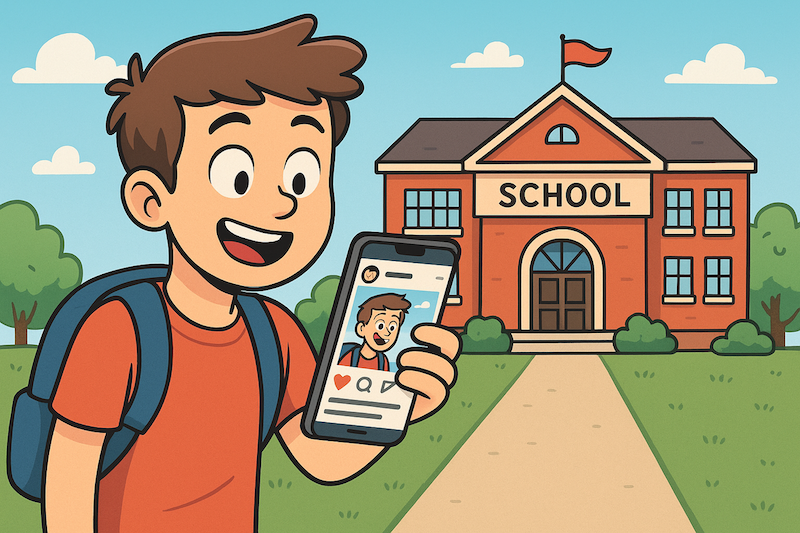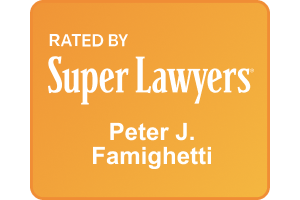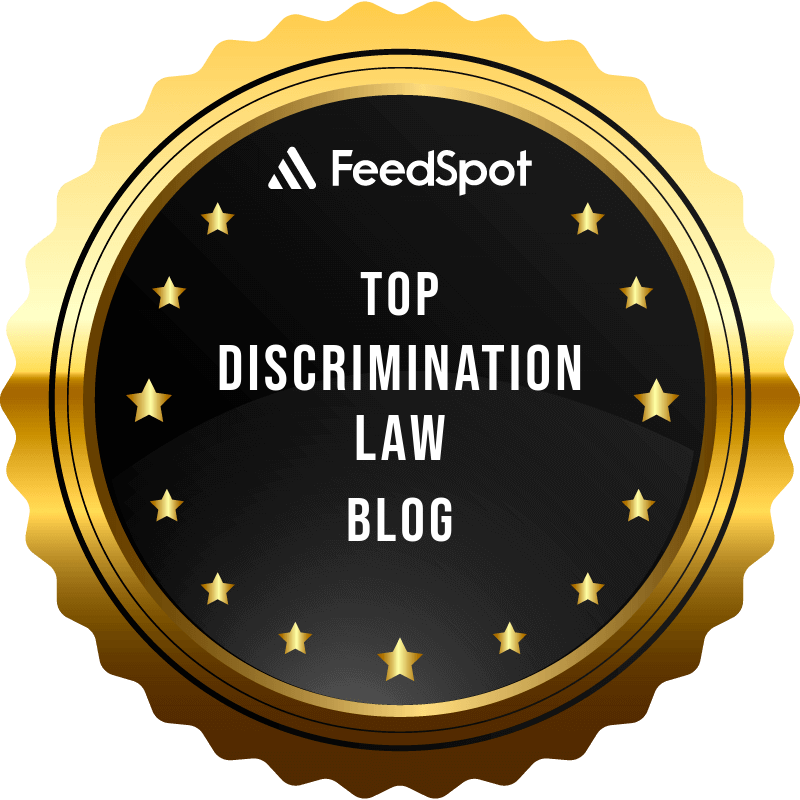- Free Consultation: (631) 352-0050 Tap Here to Call Us
Appellate Court Decides Case Concerning a Student’s Free Speech Rights

The First Amendment familiarly protects free speech rights. Through the nation’s history, courts have had to decide whether there are boundaries to free speech, and if so, what are those boundaries? In two particular circumstances — public employment and public schools — individuals maintain free speech rights. But, because of the nature of those circumstances, the government may lawfully limit free speech in some ways.
Today’s civil rights blog discusses Leroy v. Livingston Manor Central School District, a case in which New York federal appellate court, the Second Circuit, analyzed a student’s free speech rights.
Facts as Recited by the Decision
The case involves a high‐school senior, Case Leroy, who attended Livingston Manor Central School District. On April 19, 2021, Leroy and friends took a photograph outside of school hours and off school campus: Leroy lying beside a car, another student kneeling on his neck giving a “thumbs up” sign. The caption on Leroy’s Snapchat story read “Cops got another.” Simultaneously, another student posted the same image with a “Black Lives Matter” logo and the caption “Another one down.”
While Leroy said he did not realize the image resembled the murder of George Floyd until after the post—and that he did not intend that meaning—he removed his post after about seven minutes once he became aware of the reaction. A different student screenshot the post and reposted it publicly on other platforms.
Following the posting:
- The District received a wave of emails and complaints from community members, students, and staff, many expressing that the image was racist or made students feel unsafe.
- The school held an assembly, supervised a student demonstration (students knelt nine minutes to symbolize Floyd’s death), held discussions and training.
- Leroy was suspended for five days, charged under the Code of Conduct for off‐campus misconduct that “interferes with, or can reasonably be expected to substantially disrupt the educational process” and suspended from extracurricular activities for remainder of year.
Leroy then sued the District, alleging it violated his First Amendment right to free speech. The trial court, however, granted summary judgment to the District, meaning the case was dismissed. The court ruled that the suspension was lawful because the off-campus speech caused “substantial disruption.”
Legal Framework
The appellate court reviewed the case under the twin Supreme Court precedents of Tinker v. Des Moines Independent Community School District (1969) and Mahanoy Area School District v. B.L. (2021).
- Under Tinker, student speech at school may be regulated if the speech “materially disrupts class-work or involves substantial disorder or invasion of the rights of others.”
- Under Mahanoy, off-campus student speech receives greater protection: While schools can in some cases regulate off-campus speech, the unique parental and 24-hour nature of students’ lives means schools’ regulatory leeway is “diminished.” The Court did not adopt a broad rule but rather identified three features of off-campus speech that reduce the school’s regulatory interest: (1) geography/parental responsibility, (2) risk of regulating 24-hour student speech, (3) schools’ stronger interest in protecting unpopular student expression.
The appellate court applied those factors by asking: (1) What was the nature of Leroy’s speech (protected or not)? (2) When, where, how did he speak? (3) What was the school’s interest in regulating that speech?
Court’s Analysis & Holding
Nature of the speech: The court found Leroy’s speech did not involve true threats, fighting words, or obscenity—all categories typically outside First Amendment protection. Thus, his speech was “the kind of pure speech” that would ordinarily receive strong First Amendment protection.
When/where/how he spoke: The post took place off campus and outside of school hours, from his personal phone to his Snapchat friends. Although some of his “friends” were students at the school, that fact alone does not convert all his off-campus online speech into on-campus style speech. The court emphasized that social media posts, even if to school-friends, do not automatically place the speech within the schoolhouse gates. The fact it reached the school environment does not by itself justify regulation.
School’s interest: The school argued interests in preventing disruption, maintaining a safe environment, and educating students on racial sensitivity. The court accepted that these are legitimate school interests, but found them insufficient in this case. Specifically:
- The disruption evidence consisted of a 15-20 minute assembly, a student demonstration, some in-class discussion, and external messages/emails. The court found this did not meet the “substantial disruption” threshold under Tinker and Mahanoy.
- The school’s interest in punishing speech because it was offensive or made students feel unsafe was not sufficient to overcome Leroy’s First Amendment right. The court emphasized that the school’s discipline appeared motivated by offensiveness, not by evidence of actual threat, bullying, or fear undermining student learning.
- Although schools may sometimes regulate off-campus speech that causes fear or threat to safety, the record did not establish that here. The court noted that the reaction to Leroy’s post was driven largely by others (students, community, media), not by the speech’s own immediate effect within the school. The fact that third-party reposting and reaction happened did not itself justify the discipline.
Conclusion: Because Leroy’s speech was protected, occurred off campus in a personal context, and the school’s regulatory interests were not strong enough to override his rights, the court held the school’s disciplinary action violated the First Amendment. Accordingly, the district court’s grant of summary judgment to the school was reversed and the case remanded for further proceedings.
Significance
This decision is significant in the evolving doctrine of student speech in the digital age. Some key takeaways:
- It reinforces that off-campus speech (including via social media) remains protected and that schools’ regulatory authority in that sphere is narrower than on-campus speech.
- The decision clarifies that the mere fact a post reaches school friends / school environment does not automatically convert it into on-campus regulated speech.
- It reiterates that the standard Tinker disruption threshold still applies; schools must show more than discomfort, outrage, or external reaction—they must show substantial disruption or a material invasion of rights.
- It underscores that schools’ interest in addressing offensive or racially insensitive speech is legitimate—but that such an interest alone cannot justify punitive discipline for off-campus speech unless it meets the required disruption/safety threshold.
- It provides practical guidance: Courts will weigh the three factors (nature of speech, context of speech, school interest) and emphasize the diminished regulatory leeway for off-campus speech (per Mahanoy).
Practical Implications for Schools and Students
- Schools should exercise caution before disciplining students for off-campus social media posts. They should assess whether the speech truly caused or was reasonably expected to cause a substantial disruption in the school environment, or a concrete safety problem—not merely offended or upset students.
- Schools may respond to offensive posts via assemblies, discussions, restorative practices, or training—rather than immediate punitive discipline—especially when the post was off-campus and removed quickly by the student.
- Students should recognize that off-campus speech is not immune from any regulation—but still enjoys robust First Amendment protection. The more removed the speech is from the school context (time, place, audience, connection to school), the stronger the student’s claim.
- In social-media cases, the transmission effect (how widely the post spread, whether others reposted) is relevant—but cannot by itself establish the disruption or connection needed for school discipline.
Limitations & Further Questions
- The court did not adopt a detailed bright-line test for off-campus speech regulation. As the majority emphasized, Mahanoy left open “where, when, and how” off-campus speech falls outside school authority.
- The decision acknowledges that cases in which speech involves serious harassment, bullying, threats, or clear interference with other students’ rights may still be disciplinable—even if off-campus. The line between “off-campus protected speech” and “regulable speech” remains fact‐intensive.
- Schools may still have stronger defenses when speech is posted to a very broad public audience, targets specific students or groups, or occurs during a school-sponsored event or via school‐provided resources.
- The decision may prompt reassessment of student disciplinary policies to ensure they align with First Amendment protections and reflect the digital reality of student communication.
In short, the Second Circuit in Leroy addressed the challenging terrain of off-campus student speech in the age of social media, reaffirming that students retain free-speech rights outside the school gate and cautioning schools against overly broad regulation of off-campus digital expression. It reversed the lower court’s decision and sent the case back for further proceedings consistent with its analysis.
If you have questions about the Leroy decision, students’ First Amendment rights, or other free speech questions, contact a First Amendment lawyer at Famighetti & Weinick PLLC. Our lawyers are available (631) 352-0050 or (845) 669-0040.










